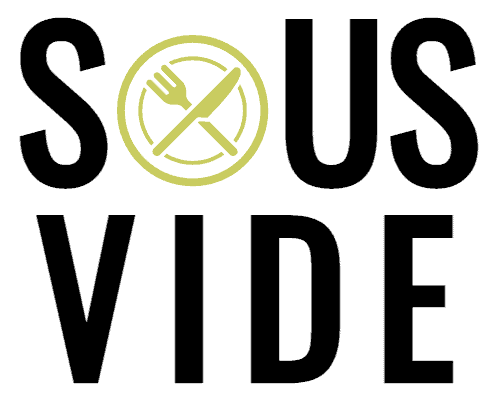The best part of the chicken? If you want my 2 cents, it’s the wings every time.
To be more specific, I love chicken wing flats. You see, every wing has three parts: a drumette, wing flat, and wing tip.
Wing flats are dark-meat chicken with a perfect skin-to-meat ratio. They’re an excellent option for frying, broiling, and baking. You can coat them in a dry rub or sauce, then dip them in ranch or blue cheese dressing when done. Who doesn’t love chicken wings?!
But wings have become expensive. And buying flats alone is really expensive and hard to find. The cheapest method is to buy a whole wing and parse it into its three parts, which is really simple! We’ll walk you through the three step process below.
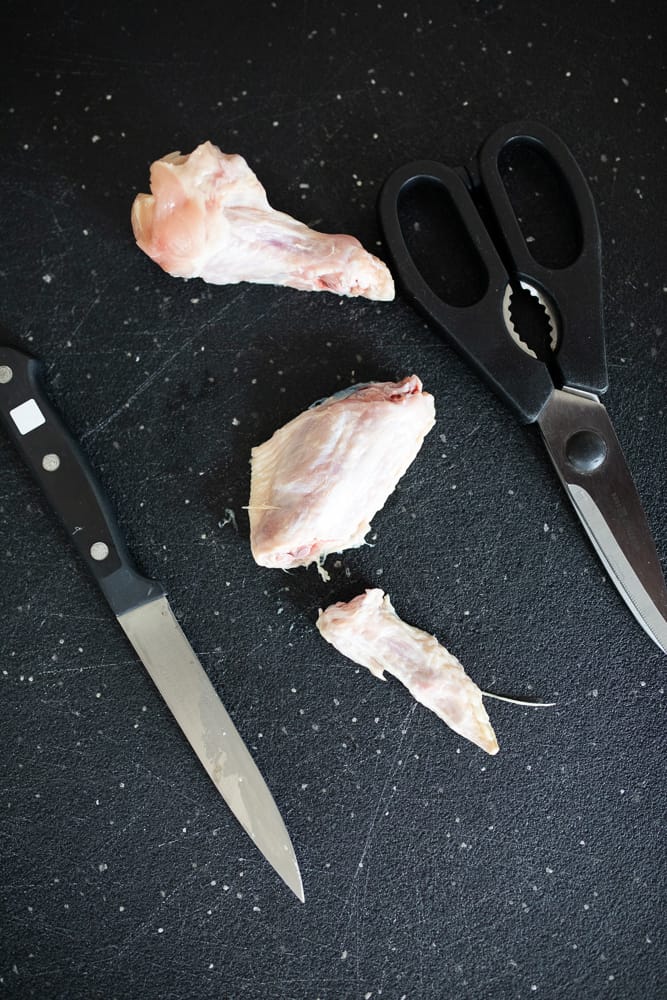
Table of Contents
What Part of Chicken Is Wing Flats (or Wingettes)?
Wing flats are named after their flat appearance. Sometimes you’ll hear them referred to as “wingettes.” They come from the middle part of the chicken wing, which could also be considered the forearm of the chicken.
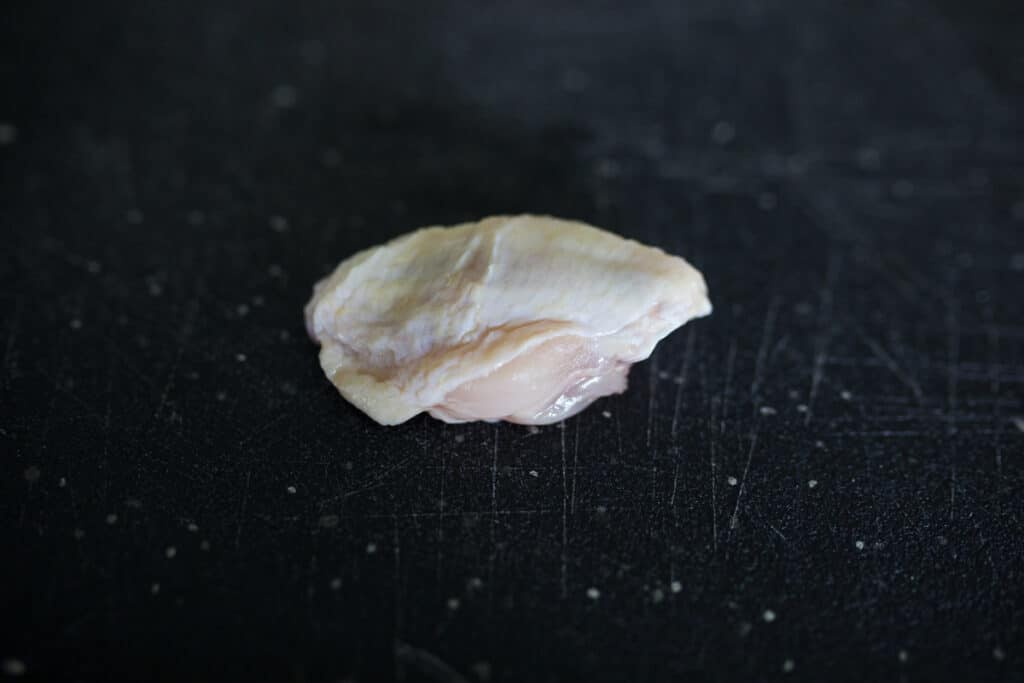
Using Human Anatomy to Describe Chicken Anatomy
To put it simply, chickens are evolved and developed animals when it comes to their body structure. If we just look at the chicken wing, like humans, chickens have an upper arm with a prominent tricep muscle and a humerus bone, and a forearm with a radius and ulna bones and muscles. To take it a step further, they even have an alula at the end of the wing, which can be considered an equivalent to the human thumb.
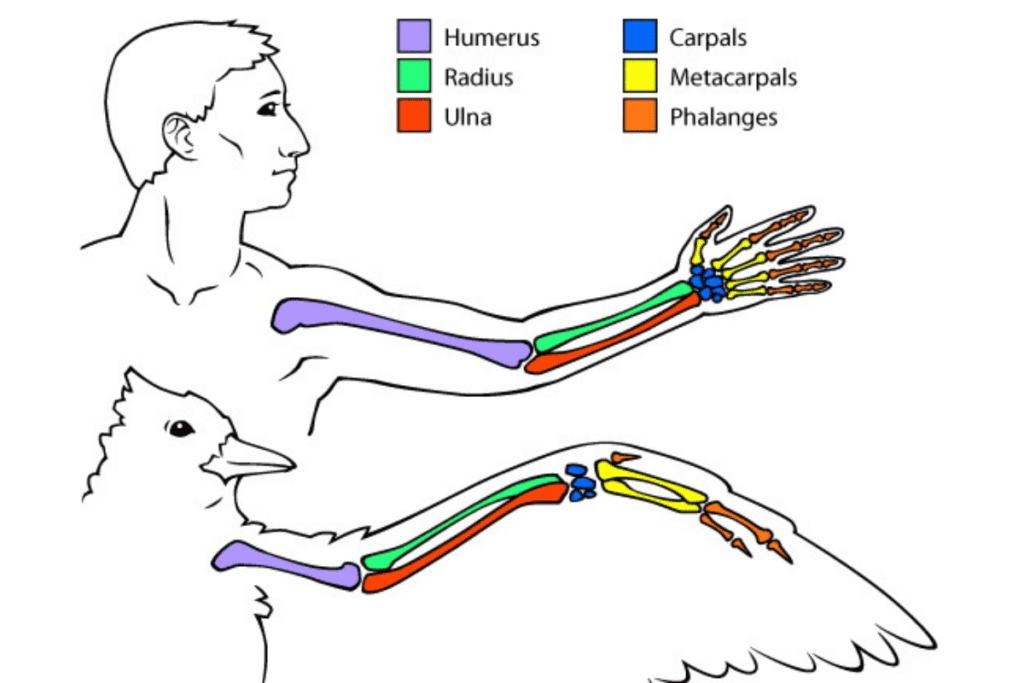
Located between the drum and the wing tip, wing flats have two thin bones that run parallel to each other along the length of the flat. It has tender dark meat, like chicken thighs, and is encased in skin.
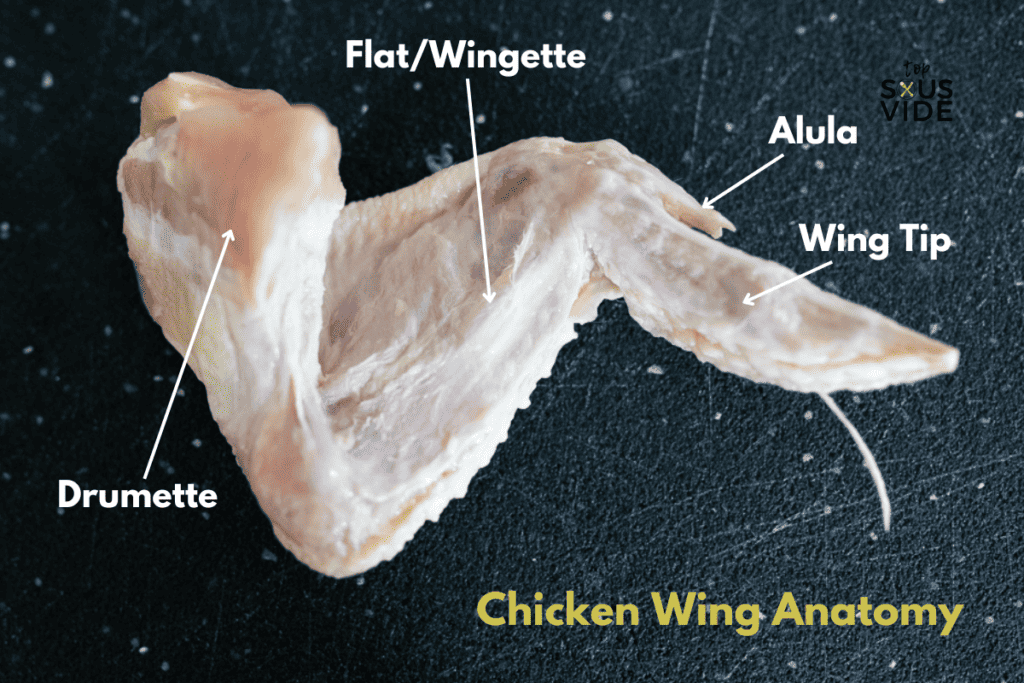
Flats have less cartilage than the drumettes and tips, leaving a cleaner bite and mouthfeel. Cartilage is found near the joints, and it so happens when you cut the flat away the cartilage is left with the drumette on one side and the wing tip on the other side. Unlike drumettes, the wing is also free of tendon.
Drumettes or “Drums”
I know a few people who prefer drumettes vs flats. Those are the people I invite to share some chicken wings. We both leave happy.
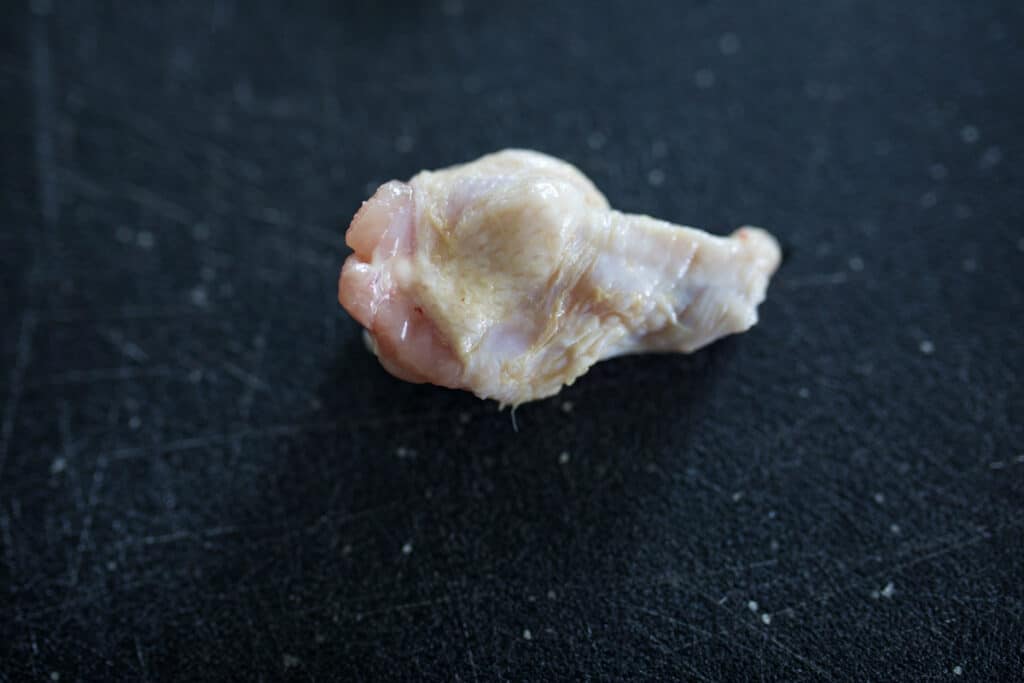
Drumettes get their name because they look just like the larger chicken drumsticks we’re all familiar with from a chicken leg. If wing flats are the forearm, the drumette is the upper arm of the chicken. You’ll often hear drumettes referred to as “drums” in short.
Drumettes contain meaningfully more meat than chicken wings. Their shape also makes them great for dipping. You’ll get some cartilage and tendon, which some people really enjoy. There’s a greater depth of texture in a drumette than a flat, but a lower skin-to-meat ratio, leaving them less tender.
Wing Tips
Wing tips are collagen rich but have very little meat. They’re not great to eat, because it’s all skin and bones, but make great chicken stock or broth. They are the pieces not included in wing packages unless you buy whole wings.
Flats vs Drums: Eating Pros and Cons
Here’s where I defend my preference for flats vs drums. I’ll do so in a pros and cons list.
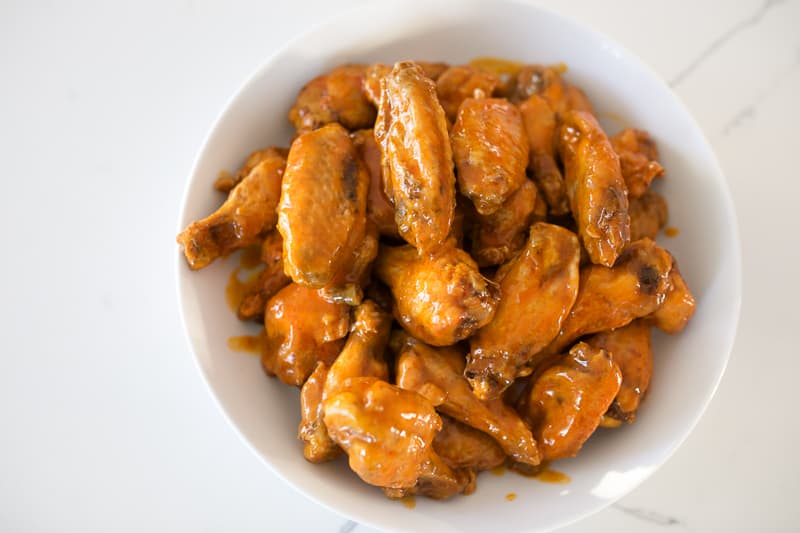
Flats Pros
- Perfect skin-to-meat ratio
- Crispier skin
- Cleaner bite – no cartilage or ligaments
- Easy to eat if you separate the two bones
Flats Cons
- Need to eat more to get full
Drums Pros
- Meatier
- Only one hand required
- Nicely shaped for dipping and catching blue cheese chunks
Drums Cons
- Cartilage and tendon
- Less skin-to-meat can leave them tasting dry
Honestly, both are delicious. But you have to prefer one over the other, don’t you? There is no wrong answer.
How To Cut Chicken Wings Into Drums, Flats and Tips
Sometimes you can’t find pre-cut drumettes and wing flats in the supermarket (aka party wings), or buying whole wings is cheaper. Whole wings cost about 30% less. Either way, cutting a whole chicken wing into portions is super simple.
You only need a sharp knife and 5 minutes to master this skill. But don’t do it in a rush. Even though it hardly takes any time, you need to be careful and focused on cutting since cutting it in the right places makes all the difference.
Pro Tip: Use a plastic cutting board instead of a wood cutting board because it will be much easier to disinfect with hot soapy water. No one needs salmonella in their lives.
Before you start cutting it, stretch out the whole wing, and you’ll be able to see that the chicken wing is made up of three parts.
Here is the step-by-step process of cutting a whole chicken wing:
Step 1: Dry and Stretch Whole Wing
Take a whole chicken wing and pat it dry with a paper towel. Then place it on a cutting board with the thicker skin side down.
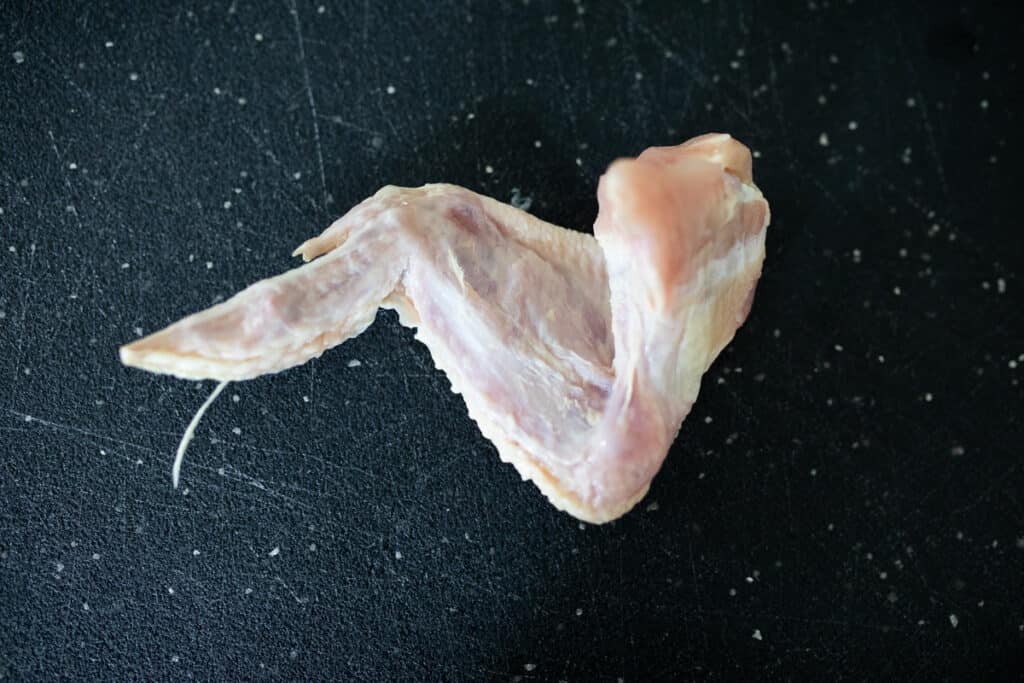
Step 2: Find the Ridges, Make Incisions
You’ll be able to see the joints. With the help of your finger, locate the ridge between the drumette and wing flat. Place the knife parallel to the long axis of the drumette beside the ridge and make an incision. Now locate a similar ridge between the wing flat and tip and make an incision.
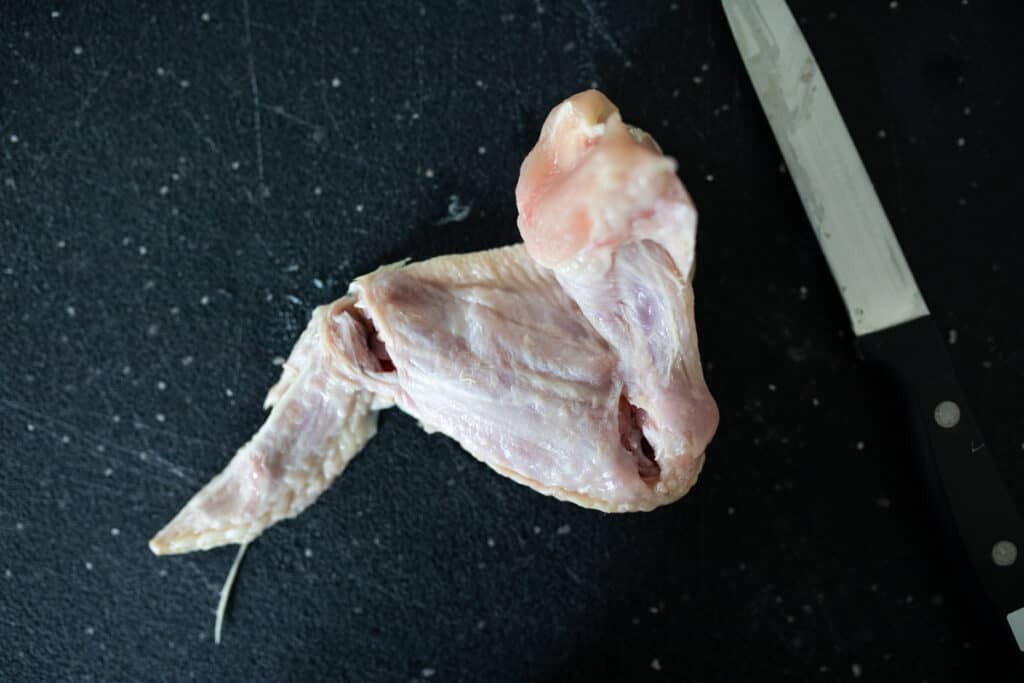
Step 3: Cut to Complete Parsing Chicken Wing
Finish the two cuts where you made the incisions. Use kitchen shear if you prefer. I find a knife to be easier to complete the job. There will be very little resistance. You will now have three neatly cut pieces of the whole chicken wing.
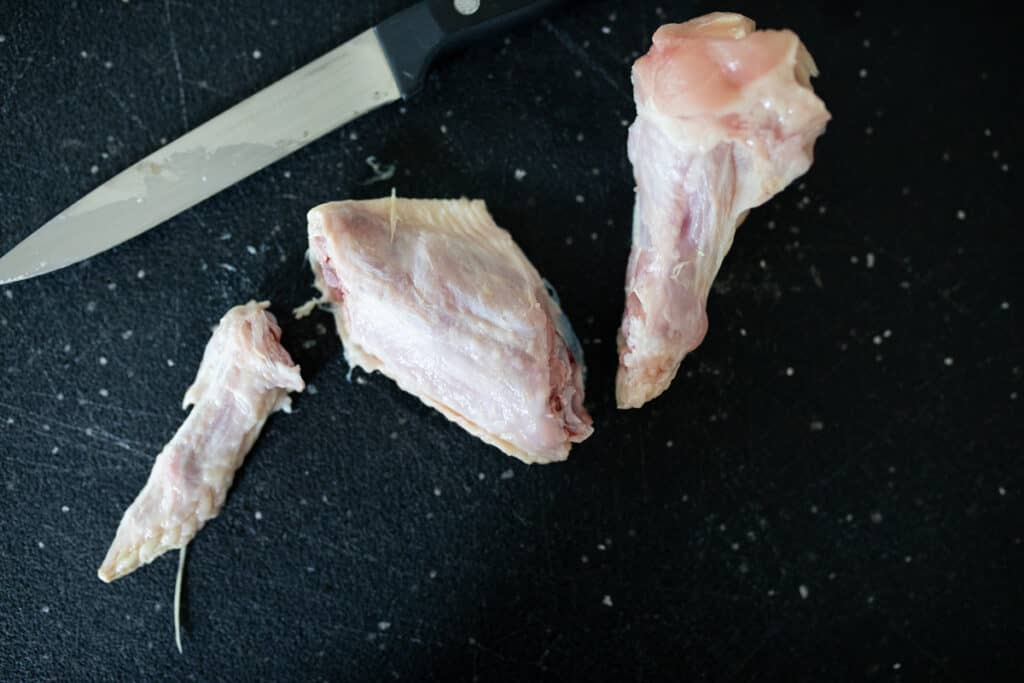
Bottom line: Cutting whole wings is really easy and can save you a lot of money. You really don’t even have to cut the wings before cooking.
How To Serve Chicken Wing Flats
Wing flats coated in a delicious sauce are the chef’s kiss. They’ve got crispy skin, perfect meat texture, and very few bones.
Sous vide is possibly the easiest way to prep frozen wing flats, but it’s certainly not the only way. You can bake, smoke, or air fry them as well. If you’re new to wing flats, here is my favorite chicken wings recipe to get you started.
Whether you need to know how many wings to buy to feed a group, which oil to fry wings in, or the ideal temp for chicken wings we have you covered. We like wings. Can you tell?
Flats Chicken Wings FAQs
Wing flats are the forearm or the middle part of the chicken wing. They are located between the drumette and the wing tip. Encased in skin, chicken wing flats have less meat and a higher skin-to-meat ratio than drumettes. Since it is in the center of the chicken wing, flats have two thin bones with dark meat between them and no cartilage.
Chicken wing flats are named after their flat appearance. A flat has a uniform and neat look because it has only two thin bones and less meat. Unlike drumettes or wing tips, wing flats have no protruding edges or sides, making them fairly symmetric and consistent in shape.
There are a few practical differences between flats and drumettes. Flats have less meat and a larger proportion of skin. This makes it easier to create crisp edges when cooking. Unlike drumettes, there is no cartilage or ligaments in wing flats which leads to a better mouthfeel.
No, you do not have to cut chicken wings. You can cook and eat them whole.
Yes, you can eat chicken wing tips. Many people enjoy it, particularly in Asia.
